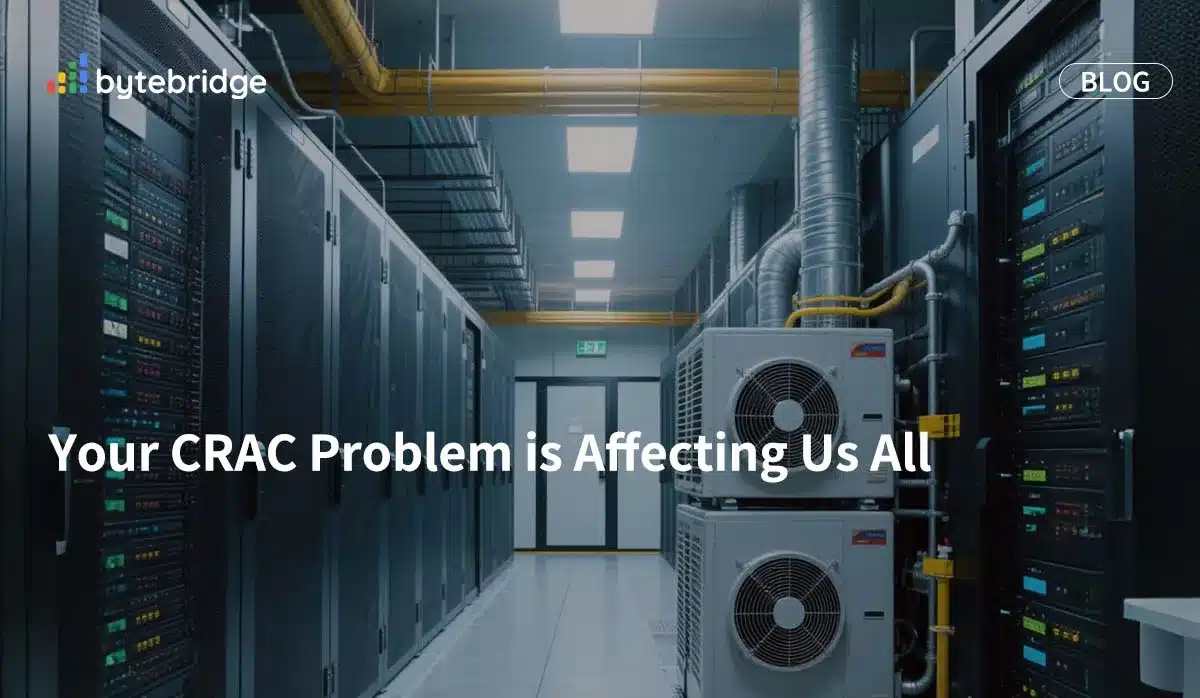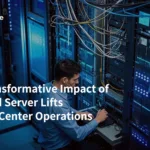The rapid expansion of AI-driven data centers is pushing the limits of global energy availability, while increasing concerns over carbon emissions and environmental sustainability. The industry has focused heavily on preventing thermal throttling by deploying direct-to-chip liquid cooling solutions for the highest power processors. However, this narrow approach ignores a larger, more pressing issue: the reliance on Computer Room Air Conditioning (CRAC) systems. The overuse of CRAC units is not just a localized inefficiency—it is a problem that negatively impacts the entire industry.
The CRAC Energy Drain
CRAC systems are among the largest energy consumers in a data center, often accounting for up to 40% of total power consumption. This inefficiency directly inflates Power Usage Effectiveness (PUE) ratios, which should be a key metric for any data center operator concerned with sustainability. With AI workloads growing exponentially, data center operators must shift their focus from merely keeping CPUs cool to optimizing overall facility energy consumption.
Liquid cooling provides a clear path to reducing CRAC dependence. Even if a facility is not deploying the most thermally intensive processors, integrating liquid cooling can significantly reduce heat load on traditional air-cooling systems. Less reliance on CRAC units translates directly to lower energy consumption, reduced operational costs, and improved sustainability.
The Looming Energy Crisis
The AI boom is already putting a strain on global power grids, with energy availability becoming a critical bottleneck for data center expansion. Industry analysts predict an energy shortfall as AI infrastructure demands skyrocket. Continued reliance on inefficient cooling methods exacerbates this issue, making it increasingly difficult to scale operations without significant investments in additional power infrastructure.
By reducing CRAC dependency through liquid cooling, data centers can dramatically cut their power consumption, allowing more capacity to be allocated to compute workloads instead of wasteful cooling overhead. In an era where securing additional power allocations is becoming more challenging, efficient cooling strategies will be the key differentiator between successful and stagnant data centers.
The Environmental Cost of CRAC Systems
Beyond energy efficiency concerns, the environmental impact of CRAC systems cannot be ignored. Traditional air-cooled data centers release vast amounts of CO2 due to their high energy consumption, contributing to global warming at a time when industries are being scrutinized for their carbon footprints. Implementing liquid cooling can significantly reduce greenhouse gas emissions by lowering the total energy required to maintain optimal operating conditions.
Forward-thinking operators must recognize that their responsibility extends beyond simply cooling high-performance AI processors. Any data center, regardless of its workload type, can benefit from liquid cooling as a means to cut CRAC usage, lower PUE, and mitigate environmental harm.
The Industry Must Evolve
Data center operators can no longer afford to think of liquid cooling as a niche solution reserved for extreme computing applications. Even those running less power-intensive processors must reassess their cooling strategies. The industry must acknowledge that optimizing cooling infrastructure is as important as improving compute efficiency. Reducing CRAC dependency is not just an operational improvement—it is a necessary shift for the future of sustainable, scalable, and economically viable data center growth.
By proactively adopting liquid cooling, operators can future-proof their facilities against impending energy shortages, reduce their environmental impact, and ensure they remain competitive in an industry where power constraints are becoming the defining challenge of the AI era. The choice is clear: continue relying on inefficient CRAC systems, or embrace liquid cooling as a solution that benefits not just individual facilities, but the industry as a whole.
About The Author
Curtis Breville
Global Head of Liquid Cooling - AI Data Centers
Dr. Curtis Breville is the Global Pre-Sales Engineering Manager – Systems & Cooling at ByteBridge, bringing 34 years of IT experience and 25 years specializing in data center infrastructure. An industry leader in liquid cooling, data storage, systems integration, and AI-ready environments, Curtis has held key roles at CoolIT Systems, AHEAD, and Dell, shaping cutting-edge cooling solutions for high-performance computing and AI workloads. His expertise in Direct-to-Chip Cooling and next-generation thermal management makes him a trusted voice in the evolution of data center efficiency and sustainability.







